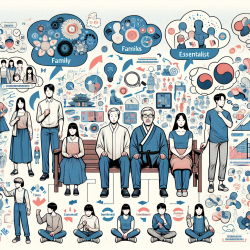Enhancing Dysphagia Management Through Fiberoptic Endoscopic Assessment: Insights for Practitioners
In the ever-evolving field of speech-language pathology, staying informed about the latest research is crucial for delivering optimal care. A recent study titled "Fiberoptic Endoscopic Assessment of Dysphagia in a Patient with Cutaneous and Oropharyngeal Blisters" provides valuable insights that can significantly enhance the management of dysphagia, particularly in complex cases.
Understanding the Case Study
The study focuses on a 77-year-old patient with bullous pemphigoid, a rare condition characterized by severe oropharyngeal dysphagia due to blistering and edema. The fiberoptic endoscopic swallow examination (FEES) provided clear evidence of pharyngeal dysphagia, highlighting the importance of this diagnostic tool in complex cases.
Key Findings and Implications
The case study underscores several critical points that practitioners should consider:
- Comprehensive Assessment: FEES offers a detailed view of the pharyngeal phase of swallowing, which is crucial for identifying the underlying causes of dysphagia in patients with complex conditions.
- Data-Driven Decisions: The use of objective data from FEES can guide targeted interventions, improving patient outcomes.
- Interdisciplinary Collaboration: Collaboration with dermatologists and other specialists is essential for managing conditions like bullous pemphigoid, which have multi-system implications.
Enhancing Practitioner Skills
For practitioners, the study offers a roadmap to enhance their skills and improve patient care:
- Training in FEES: Gaining proficiency in FEES can empower practitioners to make more accurate diagnoses and tailor interventions effectively.
- Continuing Education: Engaging in ongoing education about rare conditions like bullous pemphigoid can expand a practitioner's diagnostic and therapeutic repertoire.
- Research Engagement: Encouraging further research into the applications of FEES in various clinical scenarios can lead to broader insights and improved care standards.
Conclusion
Incorporating the findings from this study into clinical practice can significantly enhance the management of dysphagia, particularly in complex cases. By leveraging data-driven insights and fostering interdisciplinary collaboration, practitioners can achieve better outcomes for their patients.
To read the original research paper, please follow this link: Fiberoptic endoscopic assessment of dysphagia in a patient with cutaneous and oropharyngeal blisters.










